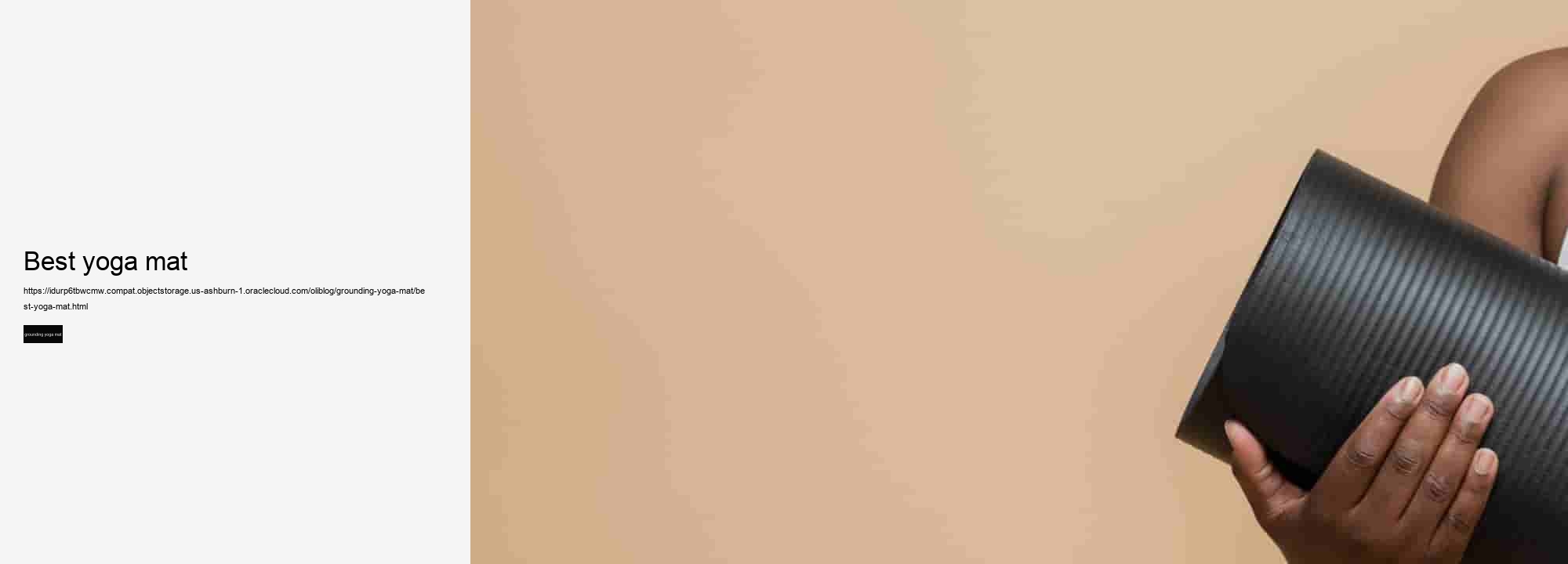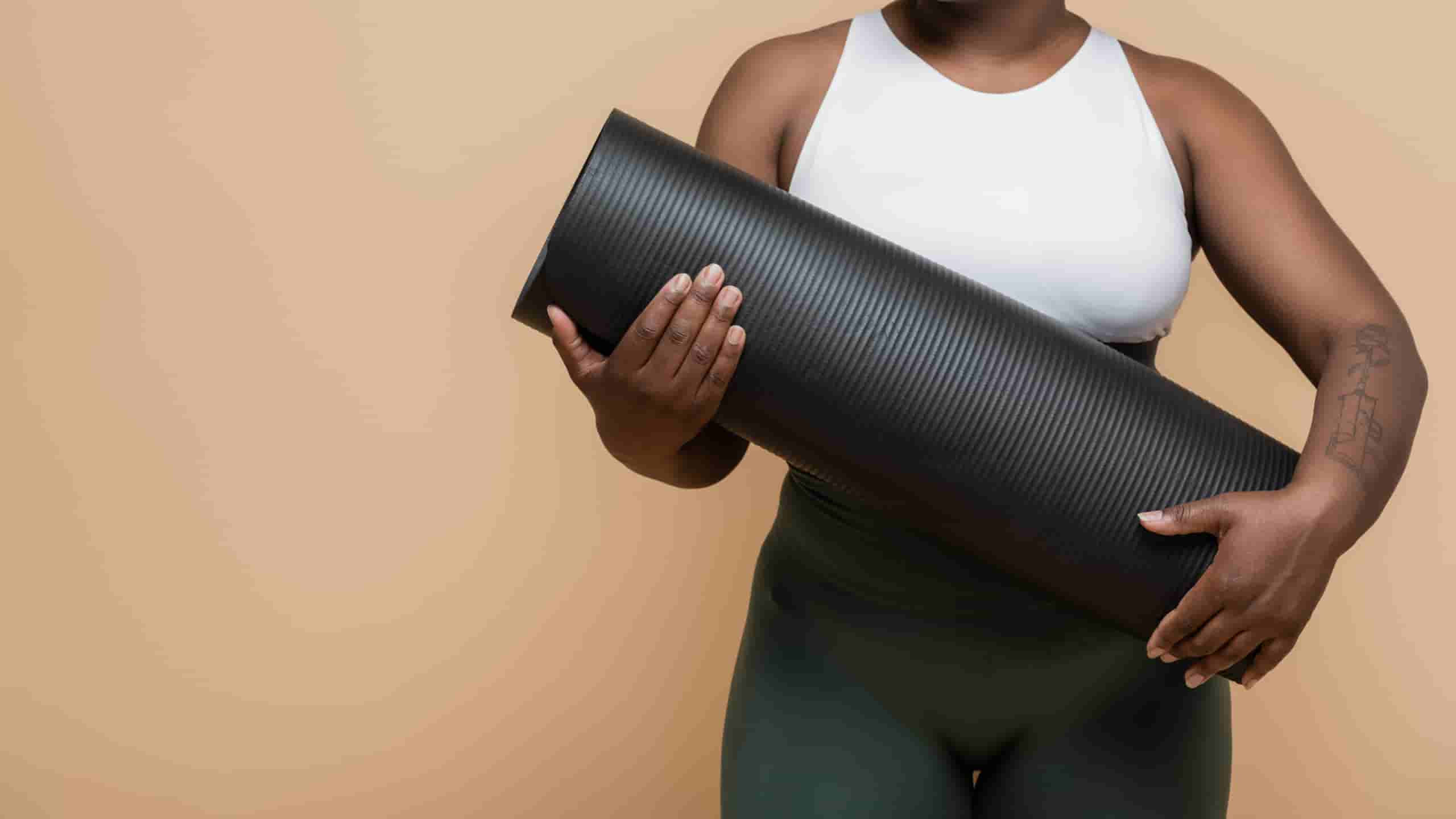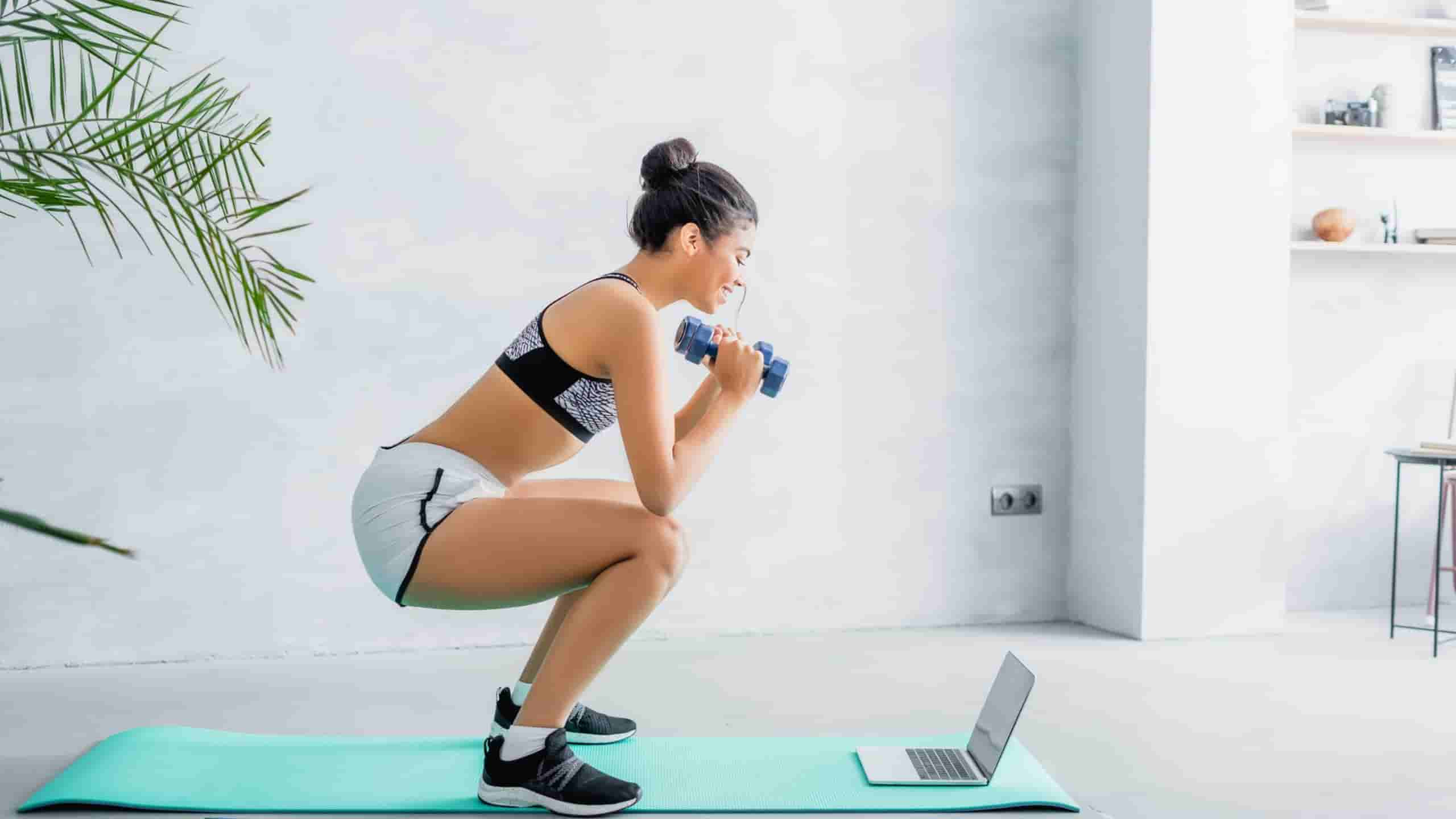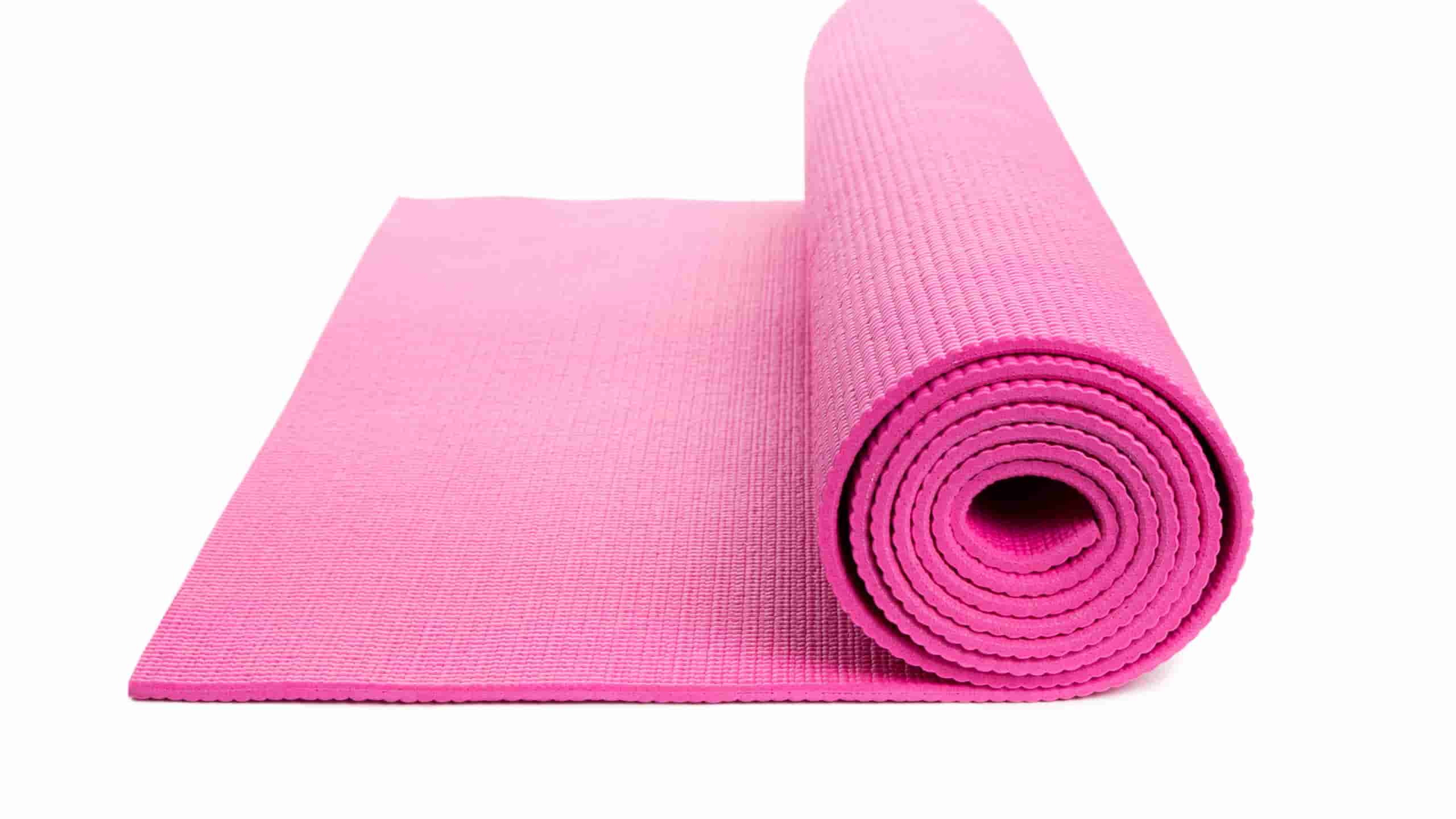

Set an intention to ground yourself and stay present throughout your practice. As you move through your poses, focus on pressing firmly into your grounding yoga mat. Feel the support of the earth beneath you as you root down through your feet and hands. Allow yourself to surrender to gravity, trusting that the earth will support you in each pose. Take time at the end of your practice to lie in savasana and feel the connection between your body and the earth below. Allow yourself to fully relax into the support of your grounding yoga mat, letting go of any tension or stress.
How to select the right thickness and material for your grounding yoga matWhen it comes to selecting the right thickness and material for your grounding yoga mat, there are a few key factors to consider in order to enhance your practice and overall experience. Thickness:Consider the level of comfort and support you desire during your practice. Thicker mats provide more cushioning for joints and pressure points, while thinner mats offer a firmer surface for stability and balance. Choose a thickness that complements your personal preferences and body needs. Material:Selecting the right material is crucial for both performance and sustainability.
Synthetic materials like PVC or TPE are also popular options for their affordability and easy maintenance. Texture:The texture of your yoga mat can greatly impact your practice by providing traction and stability. Opt for a textured surface if you tend to sweat during sessions, as it can help prevent slipping and sliding. Smooth surfaces may be more suitable if you prefer a seamless flow between poses. Weight:Consider the weight of the mat when choosing a thickness and material.
Lighter mats are easier to carry around but may sacrifice some sturdiness during use. Price:Lastly, factor in your budget when selecting a grounding yoga mat. Higher-quality materials often come with a higher price tag, but they can provide long-lasting performance and eco-friendly benefits. Evaluate the cost against the features that matter most to you in order to make an informed decision about which mat is best suited for your practice. How to create a sacred space for practice with a grounding yoga matCreating a sacred space for your yoga practice is essential for deepening your connection with yourself and the present moment.
A grounding yoga mat can enhance this experience by providing a stable foundation for your practice. First, choose a quiet and clutter-free area in your home where you feel comfortable and at peace. This could be a corner of a room, a spot near a window with natural light, or even an outdoor space if weather permits. Next, set the mood by lighting candles, burning incense, or playing soft music to create a calming atmosphere. You may also want to incorporate elements such as crystals, plants, or sacred objects that hold personal meaning for you.
Choose a mat that feels supportive and comfortable for you, whether it's made of eco-friendly materials like cork or natural rubber, or has extra cushioning for joint support. Take a few moments to ground yourself before beginning your practice. Close your eyes, take deep breaths, and visualize roots growing from the soles of your feet into the earth below. Feel yourself connected to the energy of the earth beneath you.
Allow yourself to release any tension or distractions as you flow through poses that nourish both body and soul. Benefits of grounding yoga matsGrounding yoga mats offer numerous benefits for practitioners looking to deepen their practice and enhance their overall well-being. Firstly, grounding yoga mats help to establish a connection with the earth during your practice. This connection allows you to feel more stable and rooted, helping you to stay present and focused on the mat.
By grounding yourself, you can experience a sense of calmness and stability that can carry over into other areas of your life. Secondly, using a grounding yoga mat can help to reduce inflammation in the body. The earth's natural energy has been shown to have anti-inflammatory effects, which can be beneficial for those dealing with conditions like arthritis or chronic pain. By practicing on a grounding mat, you may experience less discomfort and stiffness in your joints.
This increased awareness of your body can lead to better alignment in poses and a reduced risk of injury during your practice. With improved balance and coordination, you may find that challenging poses become more accessible over time. Lastly, practicing on a grounding yoga mat can provide mental clarity and emotional stability.
By creating a peaceful environment for your practice, you may find it easier to let go of negative thoughts and emotions, leading to an overall sense of well-being both on and off the mat. Techniques for grounding yourself on a yoga matTo ensure a stable and balanced practice on your yoga mat, it is essential to ground yourself effectively. Here are some techniques to help you achieve a strong foundation:Press your feet firmly into the mat: Start by bringing awareness to your feet and pressing them down evenly into the mat.

This action will help create a solid base of support for the rest of your body during your practice. Engage your core muscles: By engaging your core muscles, you can stabilize your body and maintain proper alignment on the mat. This will not only help with balance but also prevent injuries as you move through different poses. Lengthen through your spine: Focus on lengthening through your spine from the tailbone to the crown of your head. This elongation will help improve posture and allow for better energy flow throughout the body.
These tools can provide additional support and stability as you explore different poses on the mat. Breathe deeply and mindfully: Finally, remember to breathe deeply and mindfully throughout your practice. By focusing on your breath, you can center yourself in the present moment and connect more fully with the earth beneath you. This conscious breathing will not only enhance your grounding but also bring a sense of calmness and focus to your yoga practice.
This connection allows us to feel supported and stable in our poses, creating a strong foundation for our practice. By staying connected to the earth, we are able to cultivate a sense of presence and mindfulness in each movement and breath. This awareness helps us to stay focused and fully engaged in the present moment, enhancing the overall benefits of our yoga practice. Feeling grounded also helps to release tension and stress from the body, allowing for a deeper sense of relaxation and ease.
Maintaining a connection to the earth can also improve our balance and stability during challenging poses. By rooting ourselves firmly into the ground beneath us, we are able to find strength and support in our bodies, enabling us to move with grace and confidence on our yoga mat. Grounding ourselves in each pose can also help us connect more deeply with our breath and energy flow. By drawing energy up from the earth through our feet or hands, we can channel this vital life force throughout our entire being, fostering a sense of vitality and renewal.
Staying connected to the earth not only benefits us physically and mentally but also spiritually. By tuning into the natural rhythms of the earth, we can tap into its wisdom and healing energy, deepening our spiritual connection and enhancing our overall well-being. Incorporating grounding practices into your yoga routine can have profound effects on your mind, body, and spirit. By staying connected to the earth during your practice, you can cultivate a greater sense of presence, balance, strength, and inner peace that will carry over into all aspects of your life. How to choose a grounding yoga matWhen looking for a grounding yoga mat, there are a few key factors to consider in order to find the best option for you. Material: Choose a yoga mat made of natural materials like rubber or jute, as they provide better grounding properties than synthetic materials.
Texture: Look for a yoga mat with a textured surface to help prevent slipping and enhance your connection to the ground. Size: Consider the size of the yoga mat based on your height and preference. A longer or wider mat may be more comfortable for taller individuals or those who prefer extra space. Color: While color may seem like a superficial factor, choose a color that resonates with you and promotes feelings of calmness and grounding during your practice. Brand: Research different brands and read reviews to find one that is known for producing high-quality grounding yoga mats that will last through many practices.

Grounding poses for stability and balance on your matGrounding poses for stability and balance on your mat are essential for a strong foundation in your yoga practice. These poses help you feel connected to the earth and establish a sense of stability and balance. Mountain Pose (Tadasana) is a great grounding pose that helps you focus on your alignment and posture. Stand tall with your feet hip-width apart, grounding down through all four corners of your feet. Engage your core, lengthen your spine, and relax your shoulders down away from your ears.
Warrior II (Virabhadrasana II) is another powerful grounding pose that builds strength in both the legs and core. Step one foot back into a lunge position, keeping your front knee stacked over your ankle. Ground down through the outer edge of your back foot while reaching out through your fingertips in opposite directions. Find balance by engaging both legs equally and gazing over your front hand.
Tree Pose (Vrksasana) challenges your balance while also grounding you through one leg at a time. Start by rooting down through one foot as you lift the other foot to either calf or inner thigh, avoiding placing it directly on the knee joint. Press palms together at heart center and find a focal point to help with balance. Feel the connection to the earth through your standing leg as you grow taller like a tree reaching towards the sky. Child's Pose (Balasana) is a restorative grounding pose that allows you to surrender to gravity and release tension in the body.
Lower hips towards heels as you extend arms forward with palms resting on the mat or stacked fists supporting forehead. Breathe deeply into the back body, feeling supported by mother earth as you ground down through hands, shins, and forehead on the mat. Incorporating these grounding poses into your practice will not only help improve stability and balance but also deepen your connection to yourself and the earth beneath you on your yoga mat. Incorporating mindfulness and meditation into your grounding practice on a yoga matIncorporating mindfulness and meditation into your grounding practice on a yoga mat can enhance the overall experience of your practice.
Mindfulness involves being fully present in the moment without judgment. When you step onto your yoga mat, take a few moments to center yourself and bring awareness to your breath. Notice any sensations in your body and observe any thoughts or emotions that arise without attaching to them. As you move through your asana practice, focus on each movement with intention and awareness.

A regular yoga mat provides comfort and grip during practice, while a grounding yoga mat has the added feature of conductivity, allowing users to connect with the Earth's natural energy. Grounding mats have a built-in grounding system, whereas regular mats do not.
A grounding yoga mat works by using conductive materials that allow the body to absorb the Earth's electrons, simulating the effects of walking barefoot on natural surfaces. When the mat is plugged into a grounded outlet, it creates a connection with the Earth’s energy.
The best grounding yoga mat depends on personal preference and needs. Look for mats that are durable, comfortable, and made of high-quality, conductive materials. Popular brands in this category include Earthing and Grounded Beauty.